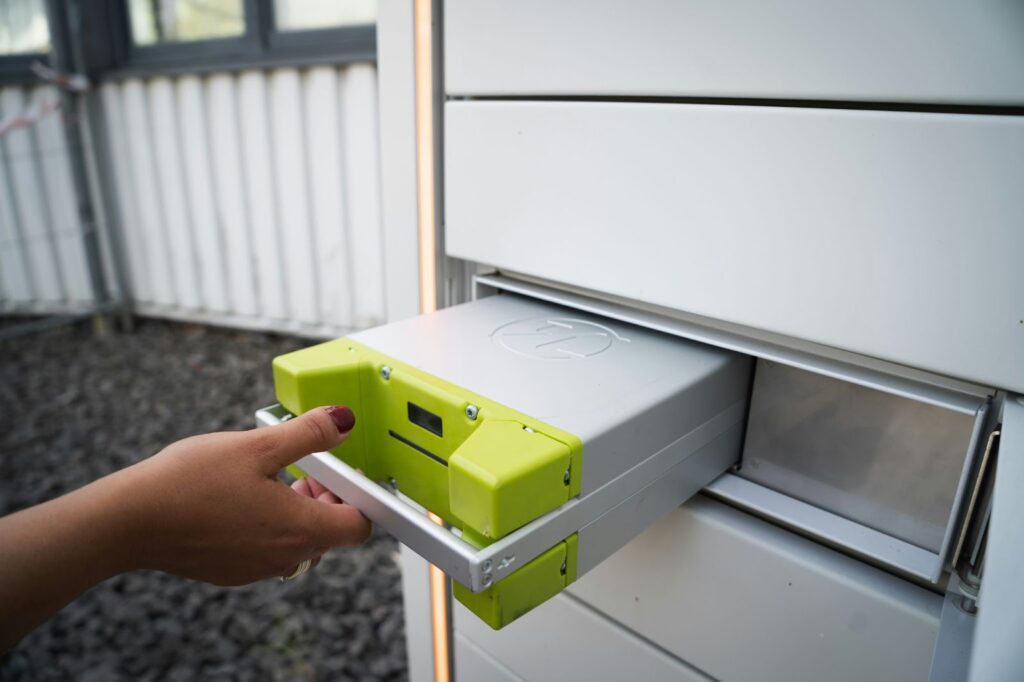
Demand charges can be eye-wateringly expensive and an unavoidable expense for those who are on commercial-rate electricity schedules.
They can also be confusing, and we are often asked how solar energy can help reduce them.
Unfortunately, the situation is not all that clear cut, and while solar energy can make a significant impact on the charges on your electricity usage, it’s somewhat harder to make a dent in the demand charges.
In this article, we go in-depth on what a demand charge is, what they are like in Colorado, and how you can use solar energy and solar storage to reduce your energy bills.
In a Nutshell
- Demand charges can account for up to 70% of an energy bill
- An example of Xcel’s demand charge is $5.63 per kW
- SLVREC’s demand charges range from $2.50 – $20.12 per kW depending on the schedule you’re on
- Although it makes a small difference, you cannot rely on solar energy to reduce demand charges
- Investing in solar storage can greatly reduce demand charges, but there are extra costs to consider
What Are Demand Charges?

A demand charge refers to the additional fee on your energy bill to cover the cost of your highest period of electricity consumption. This is based on a pre-defined interval of time where your electricity consumption is highest.
For example, a dairy farmer will likely wake up in the early morning and head out to their milking sheds and switch all of the equipment on, including the lights because it is still dark outside. They may also switch the heating system on temporarily until the day warms up.
This sudden surge in power usage may surpass the usage for the rest of the day and will, therefore, be considered “peak demand.” In other words, it’s the time of the day when you need to use the most electricity in one go.
Utility providers don’t have a limitless supply of electricity stored. It is produced on demand when it is required by the end user.
This means that utility companies must have the infrastructure and facilities in place in order to meet the peak demand of their customers – even if it is only required for a short period within a day.
This infrastructure costs a lot to maintain and use, therefore, utilities charge their commercial customers the “demand charge” to recoup the costs.
How Do Utilities Calculate Demand Charges?

The formula for calculating the demand charge varies slightly across each utility provider, but the principle is the same. Additionally, some utility rate schedules may include multiple demand charges. For example on and off-peak demand or distribution demand.
The demand charge is applied to the maximum amount of power used at any interval during the billing cycle. In most cases, this interval consists of a 15-minute time slot.
This maximum amount of power is then multiplied by the utility’s demand charge rate which then provides the total demand charge for the given billing cycle.
The formula for calculating the demand charge looks like this:
# kW of demand X $ per kW = monthly demand charge
To make this a little clearer, here are some examples of how this charge is calculated and applied:
- The utility company has set a demand charge rate of $5 per kW
- Company A reached a peak demand of 250 kW for the month (recorded in a 15-minute interval)
In this case, the demand charge would be calculated as follows:
250 kW X $5 = $1,250 demand charge
Examples of Colorado Utility Demand Charges
Xcel

Colorado’s largest energy supplier – Xcel – has various demand charges depending on your schedule:
- Schedule SG, SGL, and S-EV: $5.63 per kW
- Schedule PG: $3.86 per kW
It also appears to have a Peak Demand Pricing schedule with not one, but two demand charges. However, this is offset by lower regular electricity rates:
- Demand charge 1: $3.57 per kW based on the one hour within a month where electricity usage is highest
- Demand charge 2: $11.77 per kW (summer) and $8.94 per kW (winter) based on the one hour within a month where electricity usage is highest between 2 pm – 6 pm
Let’s do a quick calculation of what an Xcel customer might pay as a demand charge:
- The customer is on Xcel schedule SG and pays a demand charge of $5.63 per kW
- They reach a peak demand of 50 kW for the month (recorded in a 15-minute interval)
In this case, the demand charge would be:
50 kW X $5.63 = $281.50 demand charge
San Luis Valley Rural Electric (SLVREC)

SLVREC has many different tariffs that incur a demand charge. Each is based on the highest 15 minutes of demand within a month:
- Schedule A-TOD single phase: $2.50 per kW
- Schedule A-TOD three phase: $2.50 per kW
- Schedule B three phase: $5.43 per kW
- Schedule C single phase: $3.35 per kW
- Schedule I (Irrigation): $5.18 per kW (distribution demand) / $10.40 per kW (purchased power demand) / $1.75 per kW (fallowed land)
- Schedule LP-A: $15.17 per kW
- Schedule LP-B: $20.12 per kW
- Schedule EV-TOD: $2.50 per kW
Let’s do a third calculation to see what a SLVREC customer might pay as a demand charge:
- The customer is on SLVREC schedule LP-A and pays a demand charge of $15.17 per kW
- They reach a peak demand of 400 kW for the month (recorded in a 15-minute interval)
In this case, the demand charge would be:
400 kW X $15.17 = $6,068 demand charge
The Problem with Demand Charges

The issue is that these charges can be huge and disproportionate to the amount of electricity actually consumed. The Clean Energy Group states that 30% – 70% of a consumer’s energy bill can consist of the demand charge, which is a massive amount.
This is especially going to be the case if your business has very defined periods of peak electricity usage throughout the day. Those peaks are going to increase the demand charge and over-inflate your electricity bills.
For example, a business that reaches a peak consumption of 500 kW for a 15-minute interval (then uses much less for the rest of the time) will pay the same demand charge as a business that consistently uses 500 kW of energy throughout the day and night.
The whole point of demand charges is to encourage businesses to spread their electricity usage out over a longer period.
Unfortunately, for most businesses – especially farms – operating on a strictly defined schedule is crucial. That means it’s generally impossible to spread your electricity demand so that it levels out throughout the day.
For example, it’s probably necessary to switch a lot of machinery or equipment on at specific hours, rather than switch one machine on at a time.
Does Solar Energy Help With Demand Charges?

The million-dollar question!
Solar can help with demand charges, but only if the solar panel’s hours of electricity generation coincide with a business’s peak electricity usage. And this is difficult to achieve because we can’t always rely on external factors to provide us with consistent sunlight.
Let’s take the seasons for example. You probably get your farm up and running at the same time each day, say 6.30 am.
In the summer, this is likely to be during daylight, whereas in the winter, it’s likely to be dark.
During the summer, your solar panels will be generating electricity at this time, which means they will offset your peak demand. In contrast, during the winter when it is dark, your panels won’t be harvesting energy and, therefore, won’t have any effect on your peak demand whatsoever.
A similar scenario is encountered with the changing weather patterns. Although Colorado enjoys a lot of sunlight, you can’t always rely on the sun to be shining.
One day your panels could be operating at maximum efficiency during your peak demand hours. The next day might bring heavy clouds and rain, reducing the panel’s efficiency.
In short, while it is fairly easy to accurately gauge how solar energy will reduce standard electricity usage and the resulting costs, it is very difficult to predict the impact solar energy will have on the demand charge.
How Does Solar Storage Help With Demand Charges?

Investing in solar storage (aka a solar battery) is one way to ensure there is enough solar-generated electricity on hand to offset your peak demand.
During daylight hours, your solar system will typically generate more energy than you can consume. Rather than sell this excess energy to the grid, you can opt to store it in a solar battery instead.
Then, when your electricity consumption reaches its peak, you can draw the required power from the battery. This greatly lessens the amount of electricity you will need to take from the grid resulting in a much lower peak of demand.
Since the utility provider will detect your peak consumption is much lower, it will apply a demand charge to reflect this.
The drawbacks of solar storage are that they are quite expensive and increase the initial investment cost. You also have to purchase enough batteries to cope with your electricity consumption needs which will further inflate costs if this is high.
Furthermore, solar storage has a lifespan that is shorter than that of your solar panels. This means you must factor in the cost of replacing them at some point down the line.
What Size Solar Battery Is Required to Reduce My Demand Charge?
Since it is based on your energy consumption, determining the correct size of your solar storage involves a series of complex calculations
Everything from switching on lights to using tools and appliances must be included in these calculations. The more items you use that require electricity, the harder it gets to precisely understand how much storage is required.
Similarly, working out the solar storage cost vs resulting demand charge reductions is complex. However, this step is crucial because it will allow you to see if investing in solar storage will be worth it in regards to the savings made on demand charges.
The upshot is that these calculations require expertise and there is no online tool capable of working them out on your behalf.
Therefore, we recommend employing the services of an energy consultant. They have the expertise and resources to accurately determine what would be best for your unique situation.
Talk to the Experts: 8760 Solar

If you’d like to understand more about how solar energy can reduce your energy bills then chat to a member of our team at 8760 Solar.
We’ll be happy to talk to you about your demand charges and how solar can help with them. We’d also love to show you the other ways in which solar can benefit your farm – including the possibility of getting a full return on investment within the first year.
To get in touch, text “READY” to 719 470-0254 or get in touch via email: sales@8760solar.com and we’ll get back to you right away.
Frequently Asked Questions
Can Solar Reduce Demand Charges?
Solar energy can help reduce demand charges but it may not affect them, either. If peak electricity demand is reached at times when the solar panels are not harvesting energy (when it is dark outside, for example) the demand charge will not be reduced.
How Can Maximum Demand Charges Be Reduced?
Demand charges can be reduced by reducing your peak electricity demand. Solar energy can be a way to reduce your electricity demand, particularly if you invest in solar storage.
What Is the 15-Minute Peak Demand?
The 15-minute peak demand refers to the window of time when utility providers determine your highest rate of electricity consumption. The highest amount of consumption within a 15-minute interval will be used to calculate your demand charge.
What Are Demand Charges Good for?
Demand charges exist as a method to charge businesses when their electricity consumption exceeds the usual demand. They are supposed to encourage a reduction in electricity consumption or spread it out more evenly throughout the day. The reality is, that these charges are often unfair and only benefit the utility provider.
What Time of Day Is Peak Demand?
Peak demand varies between time zones and whether it’s winter or summer. The morning peak demand ranges from 6 am to 10 am and evening peak demand ranges from 5 pm to 10 pm.
